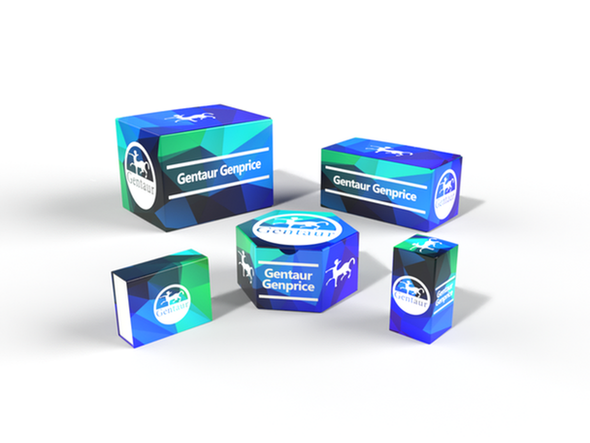740
Human Zinc finger protein SNAI1 (SNAI1) ELISA Kit | AE59712HU
- SKU:
- 740-AE59712HU
- Availability:
- Usually ships in 5 working days
Description
Human Zinc finger protein SNAI1 (SNAI1) ELISA Kit | AE59712HU | Gentaur UK, US & Europe Distribution
Species Reactivity: Human (Homo sapiens)
Abbreviation: SNAI1
Alternative Name: SLUGH2; SNA; SNAH; dJ710H13.1; snail 1 homolog|snail 1 zinc finger protein|snail 1; zinc finger protein
Application: ELISA
Range: 0.156-10 ng/mL
Sensitivity: 0.057 ng/mL
Intra-Assay: ≤5.3%
Inter-Assay: ≤9.5%
Recovery: 1, 08
Sample Type: Serum, Plasma, Other biological fluids
Detection Method: Sandwich
Analysis Method : Quantitive
Test Principale: This assay employs a two-site sandwich ELISA to quantitate SNAI1 in samples. An antibody specific for SNAI1 has been pre-coated onto a microplate. Standards and samples are pipetted into the wells and anySNAI1 present is bound by the immobilized antibody. After removing any unbound substances, a biotin-conjugated antibody specific for SNAI1 is added to the wells. After washing, Streptavidin conjugated Horseradish Peroxidase (HRP) is added to the wells. Following a wash to remove any unbound avidin-enzyme reagent, a substrate solution is added to the wells and color develops in proportion to the amount of SNAI1 bound in the initial step. The color development is stopped and the intensity of the color is measured.
Product Overview: SNAI1 is structurally similar to the Drosophila snail protein, and is also thought to be critical for mesoderm formation in the developing embryo. At least two variants of a similar processed pseudogene have been found on chromosome 2.A single transcript of 1.9 kb was detected in several human fetal tissues, with highest expression in kidney. The SNAI1 open reading frame encodes a deduced 264-amino acid protein containing 4 zinc finger motifs that show 87.1% identity to mouse Snai1.SNAI1 expression is higher in normal breast epithelial cell and stromal fibroblast cell lines than in breast cancer cell lines. They showed that SNAI1 interacts with a regulatory region near promoter I.3 of the human aromatase gene, resulting in repression of promoter I.3 and in downregulation of aromatase expression in normal breast tissue.
Stability: The stability of ELISA kit is determined by the loss rate of activity. The loss rate of this kit is less than 5% within the expiration date under appropriate storage condition. The loss rate was determined by accelerated thermal degradation test. Keep the kit at 37°C for 4 and 7 days, and compare O.D.values of the kit kept at 37°C with that of at recommended temperature. (referring from China Biological Products Standard, which was calculated by the Arrhenius equation. For ELISA kit, 4 days storage at 37°C can be considered as 6 months at 2 - 8°C, which means 7 days at 37°C equaling 12 months at 2 - 8°C) .










